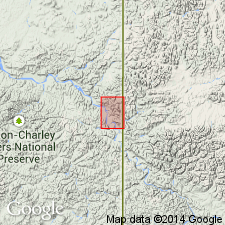
- Usage in publication:
-
- Jones Ridge Limestone*
- Modifications:
-
- Named
- Biostratigraphic dating
- Dominant lithology:
-
- Limestone
- AAPG geologic province:
-
- Alaska East-Central region
Summary:
Named for exposures in vicinity of Jones Ridge. Type section designated as central part, sec.3 T3N R33E across crest of Jones Ridge to western part of sec.10 near Canadian border, east-central AK. Informally subdivided into: lower predominantly fine-grained limestone member and upper predominantly medium- to coarse-grained bioclastic limestone member. Lower member is 2940 ft thick; upper is 60 ft. Overlies Tindir Group; underlies unnamed chert, shale, and limestone. Fossils indicate age of lower member may range from Early Cambrian to Early Ordovician. Fossils indicate upper member is either Middle or Late Ordovician. There seems to be at least one disconformity within formation.
Source: Modified from GNU records (USGS DDS-6; Menlo GNULEX).
For more information, please contact Nancy Stamm, Geologic Names Committee Secretary.
Asterisk (*) indicates published by U.S. Geological Survey authors.
"No current usage" (†) implies that a name has been abandoned or has fallen into disuse. Former usage and, if known, replacement name given in parentheses ( ).
Slash (/) indicates name conflicts with nomenclatural guidelines (CSN, 1933; ACSN, 1961, 1970; NACSN, 1983, 2005, 2021). May be explained within brackets ([ ]).

